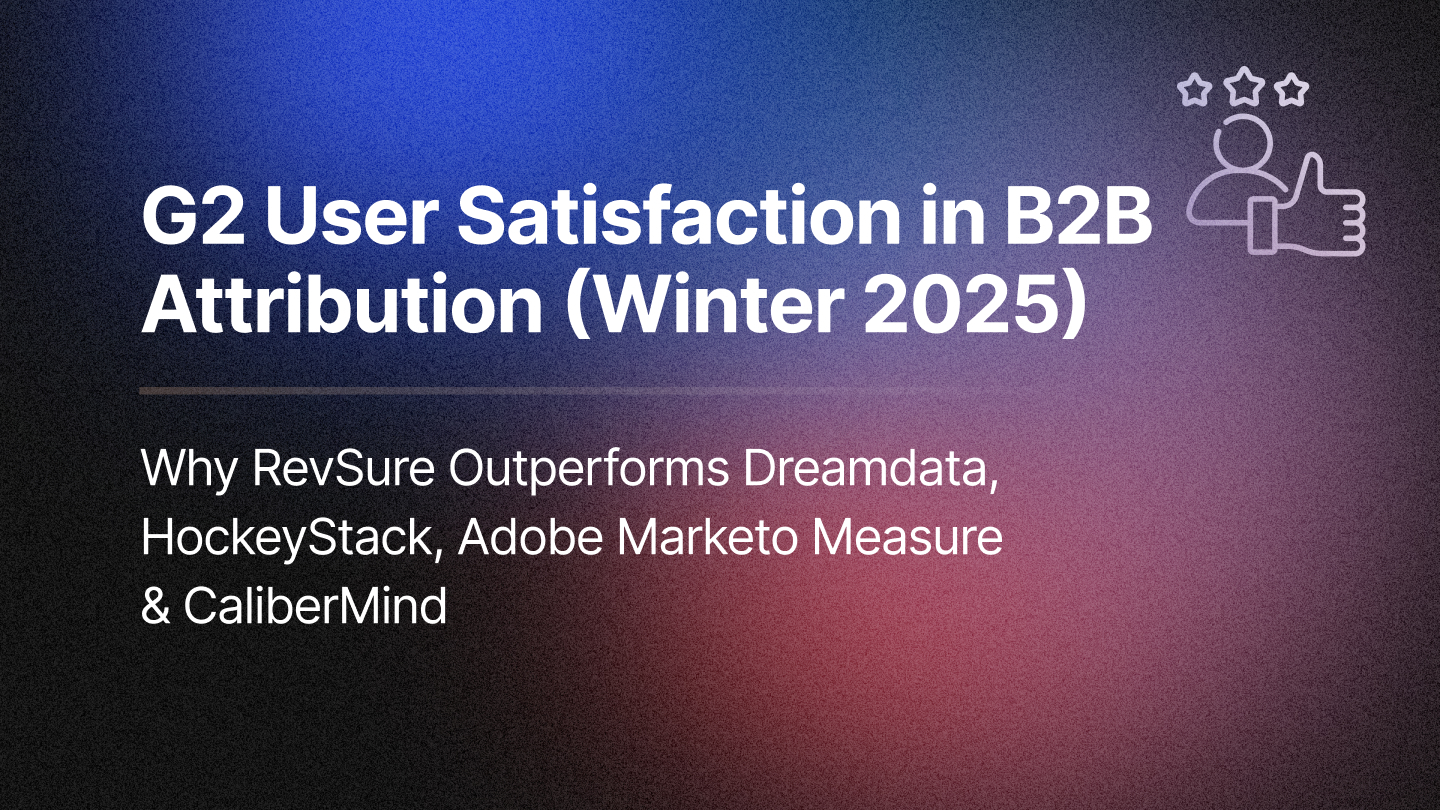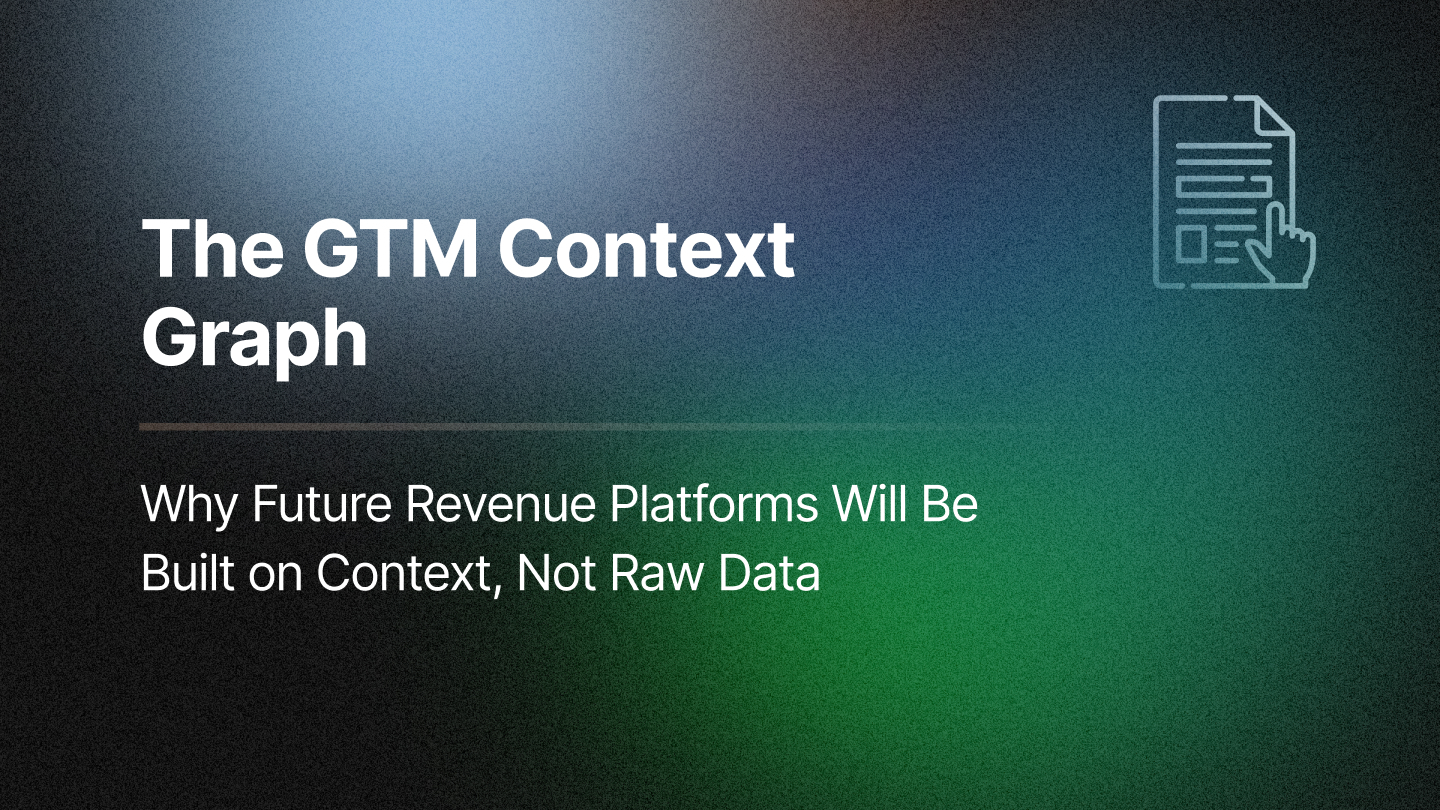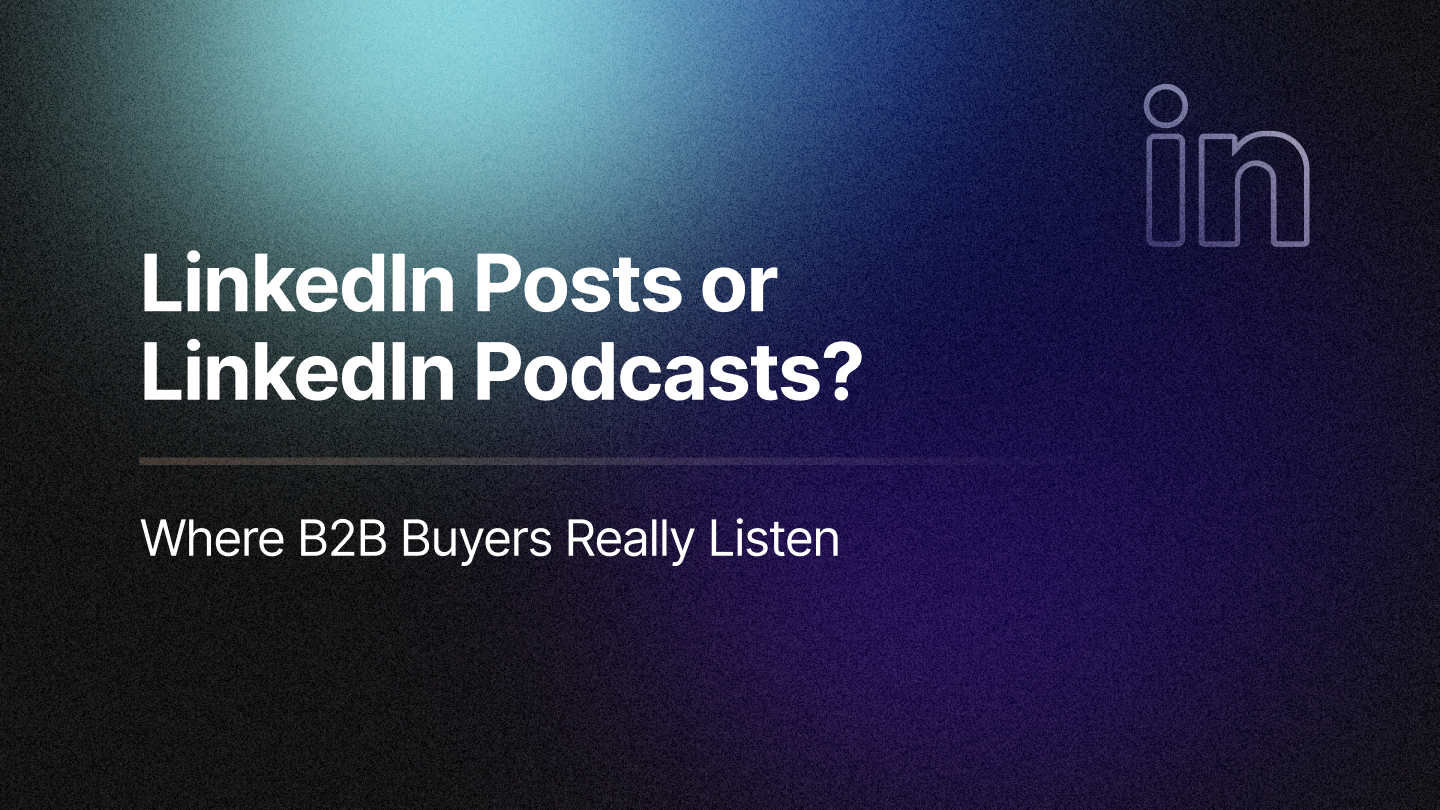If you’ve spent any time in B2B marketing, you’ve seen it. A marketer opens a dashboard, points at a bar graph, and confidently proclaims, “This campaign influenced $2.3 million in pipeline.” The room nods approvingly. No one questions the math. But behind the scenes, the truth is murkier.
Attribution models are meant to provide clarity. In reality, they’ve become performative tools we all pretend to trust because challenging them would mean admitting what we don’t know. And in today’s performance-obsessed culture, uncertainty is uncomfortable.
This blog dives into the quiet illusion many B2B marketers uphold: the idea that their attribution model is working just fine. Spoiler: It’s not. But you’re not alone.
The Problem with B2B Marketing Attribution Today
Let’s start with the basics. Marketing attribution is supposed to answer one big question: What’s driving revenue? Unfortunately, most attribution models don’t come close. Instead, they simplify complex, multi-touch, months-long buyer journeys into tidy pie charts. Here’s why they often fail:
Over-Reliance on Basic Models
Most teams are still using outdated attribution frameworks:
- First-touch attribution gives credit to the first interaction (hello, SEO blog that did all the work six months ago).
- Last-touch attribution credits the last interaction (usually a demo request form).
- U-shaped or W-shaped models attempt to split credit across a few touchpoints, but still ignore the vast majority of the journey.
- Salesforce Campaign Influence slaps “influence” on anything vaguely associated with the deal, even if the campaign had nothing to do with the decision.
These models are appealing because they’re easy to implement. But easy ≠ accurate.
Data Gaps Everywhere
Buyers are researching in channels you can’t track. Think Slack communities, LinkedIn comment threads, podcasts, YouTube reviews, group DMs, and internal referrals. Your CRM has no clue about these activities, and your attribution model doesn’t stand a chance of capturing them.
Attribution ≠ Causation
Just because a campaign “touched” a lead doesn’t mean it caused the deal. That webinar invite that was opened but never attended? It may show up in the multi-touch report, but it probably didn’t drive intent.
Why Everyone Pretends It Works Anyway
So, if attribution is flawed, why do B2B marketers keep parading dashboards like gospel? The answer is simple: performance culture rewards confidence, not complexity.
- CFOs and Boards Demand Numbers: You can’t show up to a board meeting with a shrug. When asked “What drove growth?” marketers are expected to have numbers, definitive, clear, and backed by data. Attribution provides those numbers, even if they're fuzzy. Better to be confidently wrong than honestly uncertain, right?
- It Justifies Budget and Headcount: When you need to defend your LinkedIn ads budget or argue for more headcount on the content team, you need proof. Attribution models, no matter how flawed, become tools for political survival.
- It's Easier Than Rebuilding the Model: Rebuilding attribution from scratch is hard. It requires cross-functional buy-in, a deep understanding of the buyer journey, and an uncomfortable admission that your current model isn’t working. Many teams would rather just... tweak the color palette on the dashboard.
- Most Teams Don’t Know There’s a Better Way: For many B2B organizations, basic attribution is all they’ve ever known. They assume all vendors work the same way. They don’t realize there are modern, AI-powered approaches that account for funnel progression, buyer intent, and probabilistic influence.
The Most Common Attribution Theater Moves
If you’ve sat through a few marketing performance reviews, you’ll recognize these greatest hits:
- “This campaign influenced 80% of pipeline.” Because every lead got added to a campaign by automation, regardless of whether they engaged.
- “Organic search drove $1M in bookings.” Because people Googled your brand name after clicking a paid ad. Cool story.
- “That webinar sourced 30 deals.” Because your campaign influence model tagged every attendee, even though sales followed up with none.
This isn’t malicious. It’s systemic. But it leads to dangerous decision-making, campaigns that get overfunded, content that gets deprioritized, and sales-marketing misalignment.
The Cost of Pretending
When marketers pretend their attribution model is working, they make decisions on incomplete or misleading data. The fallout includes:
Misallocated Spend: Channels that look good on paper get more budget. But those may not be the true revenue drivers. Meanwhile, high-performing but hard-to-measure channels, such as dark social or customer advocacy, often get neglected.
Broken Feedback Loops: If you can't accurately tie marketing activities to outcomes, you can't learn what works. That means repeated mistakes, ineffective campaigns, and missed opportunities.
Misaligned Incentives Across Teams: Sales blames marketing for bad leads. Marketing points to attribution dashboards. RevOps is stuck in the middle. Without trustworthy attribution, trust itself starts to erode.
What Better Attribution Looks Like
Okay, we’ve dragged the old model enough. Let’s talk about what the next generation of marketing attribution should look like and how to get closer to the truth.
Full-Funnel Attribution > Lead-Based Attribution: Most attribution tools only measure what happens before the MQL stage. But what about after? What content helps accelerate deals? What retargeting influences late-stage conversions? Full-funnel attribution tracks progression across every stage: MQL → SQL → Opportunity → Closed Won. It’s no longer about what generated the lead; it’s about what drove revenue.
AI-Powered Signal Harmonization: Rather than hardcoding attribution rules, modern tools use machine learning to assign credit based on buyer behavior patterns, conversion probabilities, and historical lift. This approach accounts for anonymous web behavior, email engagement signals, paid ad interactions, CRM activity, and third-party intent, And it gets smarter over time.
Probabilistic Models, Not Just Deterministic Ones: Instead of forcing a binary answer (did this touch influence the deal?), probabilistic models ask: How likely is it that this touch contributed? This nuance leads to more realistic decision-making.
Incrementality Testing: Want to know if a campaign actually moved the needle? Run an incrementality test. Hold out a group, compare results, and measure lift. It’s the gold standard for proving causation, not just correlation.
What Marketing Leaders Can Do Today
If you’re a CMO, Head of Demand Gen, or RevOps leader, you don’t have to accept flawed attribution as your fate. Here’s how to start improving today:
- Audit your current model. What assumptions is it making? What stages does it cover? What data is missing?
- Layer in qualitative insights. Ask sales what content influenced deals. Talk to customers about their journey.
- Complement with other analytics. Use cohort analysis, funnel velocity metrics, and buyer journey mapping.
- Invest in attribution that tracks conversion and progression. Look for tools that go beyond form fills and webinar registrations.
How RevSure Helps
At RevSure, we didn’t just build another attribution model; we reimagined the entire approach to reflect how modern B2B buying actually happens. Here’s how we tackle the core shortcomings of traditional attribution systems:
1. Beyond Lead Gen: Full-Funnel Attribution
The Problem: Most attribution models stop at MQLs, ignoring what happens after handoff to sales.
How RevSure Helps: We track influence and progression across the entire funnel, from first anonymous touch to closed-won. That means you see not just what sourced the lead, but what moved the deal forward, accelerated it, or contributed to expansion.
2. From Touchpoints to True Conversion Signals
The Problem: Traditional models count every touchpoint equally, whether or not it drove any intent.
How RevSure Helps: We distinguish between passive engagement and meaningful actions. Our AI identifies conversion signals, the moments that actually matter, so you don’t waste time optimizing for noise.
3. Probabilistic, AI-Driven Attribution (Not Rule-Based Guesswork)
The Problem: Rigid rule-based models (first-touch, last-touch, U-shaped) ignore the nuance of real buying behavior.
How RevSure Helps: Our attribution engine uses machine learning to assign credit probabilistically based on conversion likelihood and historical outcomes across campaigns, personas, and segments. You get insights rooted in behavioral patterns, not just timelines.
4. Incorporating the Unseen: Harmonized Signals from All Systems
The Problem: Attribution often excludes critical signals from multiple tools, especially in PLG, ABM, or event-heavy funnels.
How RevSure Helps: We ingest and harmonize data from CRM, MAPs, web analytics, ad platforms, SEP tools, intent providers, product usage, events, and more. Everything’s stitched into a unified buyer journey graph.
5. Measuring Progression, Not Just Participation
The Problem: Most models assume if a campaign touched a deal, it helped. But did it actually move it forward?
How RevSure Helps: Our funnel progression analysis shows you which campaigns or content advanced a lead from one stage to another, and which ones had no impact. That’s true influence.
6. Intent + Fit: Smarter Lead Scoring Aligned with Revenue Potential
The Problem: Traditional lead scoring is based on form fills and email opens, activities that rarely signal true intent.
How RevSure Helps: We combine fit (firmographic + technographic data) with real-time behavioral and intent signals to score accounts and leads based on their likelihood to convert and close. The result: more pipeline-ready prioritization.
7. Incrementality Testing + ROI Analysis
The Problem: Most teams can’t answer: Would this campaign have worked if we didn’t run it?
How RevSure Helps: We support lift-based analysis and incrementality testing, helping you isolate the true effect of each program and channel. Perfect for brand campaigns, ABM experiments, and testing new tactics.
8. Real-Time Feedback Loop to Ad Platforms
The Problem: Even if you know what’s working, you can’t act on it fast enough in your ad tools.
How RevSure Helps: We write enriched lead and account scores back into Google, Meta, and LinkedIn, so your media teams can optimize targeting based on actual revenue impact, not clicks or form fills.
Final Word: Don’t Mistake Confidence for Accuracy
The next time you see a marketing dashboard confidently declaring a channel’s contribution to revenue, ask one question: How do we know?
You don’t have to tear it all down. But stop pretending your attribution model is perfect. The best marketers aren’t the ones with the flashiest dashboards. They’re the ones who question the data and invest in systems that get them closer to the truth.
Because when you stop faking it, you can finally start fixing it.
Related Blogs







